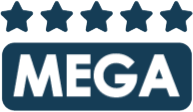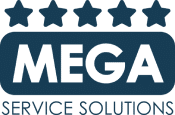Keeping a bank branch immaculate is not just about appearances, it’s about safety, professionalism, and trust. Banks see heavy daily foot traffic, from customers using ATMs to staff handling documents and cash. A well defined banking cleaning checklist helps maintain a consistent level of cleanliness, ensuring every corner from the lobby to the vault meets high standards. In this article, we outline key cleaning tasks and best practices tailored for financial institutions, using a clear checklist approach. We also discuss why cleanliness is crucial in banking and how commercial cleaning for banking environments addresses unique challenges.
Why a Clean Bank Matters
A clean bank signals to customers that their finances are in responsible hands. In fact, a spotless banking environment indicates transparency and professionalism essentials for earning customer confidence. First impressions count: if a client walks into gleaming floors and tidy teller stations, they immediately perceive the institution as organized and trustworthy. On the other hand, dusty counters or overflowing trash bins can undermine credibility. This professional image isn’t just for show, it contributes to customer comfort and loyalty. When customers see that you take care of your space, they feel more comfortable and trust you to take care of their money..
Cleanliness is also directly tied to health and safety. Banks handle a continuous exchange of paper currency and documents, which can carry germs. Studies have found that ATM keypads and other high touch surfaces can be hotbeds of bacteria orlandohealth.com, underscoring the need for frequent disinfection. Regular cleaning and sanitizing reduces the spread of infections among employees and visitors. Especially after the COVID-19 pandemic, daily surface disinfection in banks has become expected. By keeping facilities sanitary, banks protect everyone’s health and even improve employee productivity, since a hygienic environment means staff are less likely to fall ill. There’s an operational benefit too: a clean workplace boosts morale. Employees working in a dirt free, fresh smelling branch tend to be more focused and satisfied with their job. They can serve customers better when they aren’t distracted by clutter or tasked with extra cleaning duties. In contrast, if bank staff have to frequently clean their desks or break areas due to lack of janitorial support, it can overwhelm them and reduce efficiency. Thus, investing in proper cleaning not only impresses customers but also creates a safer, more productive environment for employees.
Lastly, maintaining cleanliness helps banks comply with health and safety regulations. Financial institutions are subject to sanitation standards just like any other business. Adhering to these standards demonstrates a commitment to a secure and hygienic environment for everyone. In some cases, professional bank cleaning services even support security protocols, for example, by handling documents carefully and following confidentiality rules during cleaning. In short, a clean bank is not only a welcoming space but also a foundation for trust, health, and smooth operations.
Key Areas to Focus on in Bank Cleaning
Banks have a variety of spaces, each with its own cleaning needs and challenges. When crafting a banking cleaning checklist, it’s important to cover all key areas:
- Entryway and Lobby: The entrance is the first thing customers see, it should always be spotless. Sweep and mop the floors at the doorway and lobby, especially on rainy days when mud gets tracked in. Wipe down glass doors and panels to remove fingerprints and smudges. Remember that door handles can harbor germs for hours, so regular disinfection is crucial. In the lobby where clients wait, dust and disinfect all surfaces. Chairs, tables, and writing counters for forms should be cleaned daily so visitors always find a neat space.
- Teller Stations and Offices: These front line areas see constant use. Counters, teller windows, and the writing desks where customers fill paperwork must be kept clean throughout the day. Disinfect high touch surfaces like counter tops, signature pads, and pen holders. Employees’ workstations and phones also need wiping down daily. Keeping these areas clean and well organized not only prevents germs but also instills confidence that the bank cares about details and security.
- ATMs and Self Service Kiosks: ATMs are in use 24/7 and accumulate both grime and germs quickly. A good checklist includes cleaning ATM screens, buttons, and surrounding ledges every day. Use electronics safe cleaners, avoid spraying liquids directly on screens or keypads to prevent damage. Instead, wipe with a slightly damp microfiber cloth to sanitize without harming the machine. It’s easy to overlook ATMs, but regular cleaning here can help prevent the spread of illness in these high traffic touchpoints. Don’t forget drive through teller machines and any check deposit or ticket dispensers; they require similar attention.
- Waiting Areas and Furniture: Lobby sofas, chairs in waiting areas, and conference room furniture collect dust and crumbs. Vacuum fabric upholstery weekly and wipe down hard seating surfaces daily. Pay attention to magazine tables or brochure stands, these should be decluttered and cleaned so the bank always looks orderly. Clean, comfortable seating makes a long wait more pleasant for customers.
- Restrooms: A bank’s restroom can influence a visitor’s overall impression. Ensure bathrooms are cleaned and disinfected every day without fail. Restrooms should be clean, well stocked, and properly ventilated, as they are common sources of cross contamination. Scrub and disinfect toilets, urinals, sinks, and countertops daily. Refill soap dispensers, hand towels, and toilet paper regularly. A fresh smelling, tidy restroom signals that the bank pays attention to every detail of hygiene.
- Break Rooms and Kitchens: If the branch has an employee break room or kitchenette, include it in the daily routine. Wipe down tables and counters where staff eat, and clean up any food crumbs or spills to avoid pests. Empty trash cans and clean sinks and microwaves. A weekly deeper clean of appliances like the refrigerator and coffee machine is advisable to keep these shared facilities sanitary.
- Floors and Carpets: Banks often have hard floors (tile, marble) in lobbies and carpet in offices. Daily sweeping or vacuuming is essential to remove dirt tracked in by foot traffic. Mop hard floors daily with appropriate cleaners (and use wet floor signs to prevent slips). High traffic carpeted areas might need vacuuming daily and a more thorough shampoo or steam cleaning monthly to maintain appearance. Using entrance mats at doors can help trap dirt and moisture, but these mats themselves should be cleaned or changed frequently.
- Windows and Glass Partitions: Clear visibility is important for both security and appearance. Wipe down glass teller partitions, internal glass walls, and entryway windows every day to remove fingerprints and smudges. A streak free shine on glass gives the branch a polished, professional look. For exterior windows, a scheduled cleaning (perhaps monthly or quarterly) keeps the building façade inviting.
By identifying these key areas, the cleaning staff or service can ensure no aspect of the bank is overlooked. Next, we’ll break down the daily, weekly, and monthly tasks that should appear on a banking cleaning checklist for thorough maintenance.
Daily Cleaning Checklist for Banks
Certain cleaning tasks need to be done every single day to keep a bank presentable and hygienic. Below is a daily checklist covering essential tasks:
- Entrance and Lobby: Sweep and mop entrance floors; vacuum lobby carpets. Remove any dirt or water at the doorway. Clean glass doors and sanitize door handles. Ensure welcome mats are clean. Tidy up any pamphlet racks or tables in the lobby.
- Counters and Desks: Wipe down and disinfect all teller counters, customer service desks, and personal banker desks. Sanitize high touch surfaces such as door handles, light switches, keypads, and ATM screens. This includes cleaning the touchscreens and buttons on self service kiosks and queue ticket machines.
- Seating Areas: Wipe and sanitize chairs and benches in waiting areas daily. This removes dust and any spills, and ensures customers always have a clean place to sit. Straighten magazines or marketing materials.
- Trash Removal: Empty all wastebaskets and shred bins. Securely dispose of trash, especially any sensitive documents that have been placed in designated shred bins, following the bank’s confidentiality protocols.
- Restrooms: Clean and disinfect restroom toilets, sinks, and countertops every day Mop the restroom floor with a disinfectant cleaner. Refill soap dispensers, paper towel holders, toilet paper, and hand sanitizer. Take out restroom trash. Check that the restroom smells fresh (use odor neutralizers if needed).
- Break Room: Clean up the break room or pantry area daily. Wipe tables, countertops, and the outside of appliances. Sweep or mop the floor to remove crumbs and spills. Empty the trash and replace liners. Make sure dish soap and paper towels are available for employees.
- General Tidying: Tidy any cluttered areas visible to customers. For example, keep the area where deposit slips and pens are available neat – pens in holders, forms stacked. Also, organize any loose cables or equipment in customer areas to prevent trip hazards and dust buildup.
By following a daily checklist, banks can address the most visible and high risk cleanliness issues regularly. Daily attention to these tasks keeps the facility looking professional and prevents dirt and germs from accumulating beyond control.
Weekly and Monthly Deep Cleaning Tasks
In addition to daily upkeep, some cleaning tasks in a bank need to be scheduled on a weekly or monthly basis. These periodic deeper cleans ensure the facility remains in top condition over time:
- Weekly Tasks: Once a week, focus on areas that don’t require daily attention but still accumulate dirt or wear.
- Detailed Dusting: Dust high shelves, cabinet tops, wall art, and ceiling corners to clear cobwebs. Clean air vents and grilles of dust as needed (some vents may be monthly).
- Floor Care: Vacuum all carpeted areas thoroughly, including edges and under furniture that daily cleaning might miss. For hard floors, a weekly buff or machine scrub can maintain shine if applicable.
- Upholstery and Furniture: Vacuum fabric chairs and sofas to remove dust and crumbs. Spot clean any stains on seating. Polish wood furniture and conference tables to protect their finish.
- Glass and Fixtures: Wipe down window blinds and dust window ledges. Clean interior glass partitions more thoroughly. Polish metal fixtures like door handles, rails, and teller window frames to keep them gleaming.
- Appliances: In break rooms, deep clean appliances weekly or biweekly. For example, empty and wipe the interior of the refrigerator, sanitize the microwave (including inside), and run a cleaning cycle or de scaling for coffee makers.
- Storage and Secure Areas: Tidy and clean storage rooms or the vault anteroom. This may include organizing documents or supplies (in coordination with bank staff) and cleaning the floors in these less frequented areas. Ensure that any cleaning in high security zones is done under supervision per bank policy.
- Detailed Dusting: Dust high shelves, cabinet tops, wall art, and ceiling corners to clear cobwebs. Clean air vents and grilles of dust as needed (some vents may be monthly).
- Monthly Tasks: Some heavy duty cleaning tasks can be done monthly (or periodically every few months) to refresh the branch:
- Carpet Shampooing: Shampoo or steam clean carpets monthly or quarterly, depending on soil level, to remove deep dirt and stains. This also helps prolong the carpet’s life and keeps the branch smelling fresh.
- Floor Refinishing: If the bank has tile or stone floors, a monthly deep clean or polishing will help maintain their shine. This might involve machine scrubbing, buffing, or re waxing floors, often done by a professional floor care team.
- Windows: Schedule a thorough window cleaning for all exterior windows and higher interior glass panes. Professional window cleaning once a month (or at a suitable interval) ensures a clear, streak free view.
- HVAC and Air Quality: Check air vents, HVAC filters, and duct grilles. Clean or replace filters if needed to maintain good air quality. Clean vents and ceiling fans to prevent dust circulation.
- Deep Sanitization: Do an extra round of sanitizing in areas like the ATM lobby, waiting chairs, and workstations. This could include using tools like steam cleaners or electrostatic sprayers for disinfecting hard to reach spots.
- Inspect for Issues: Use the monthly deep clean as an opportunity to spot any maintenance issues. Look for mold or water damage in restrooms, check for pest droppings in hidden corners, and ensure everything from emergency exit lights to hand sanitizer stations is in working order. Report any issues to maintenance promptly.
- Carpet Shampooing: Shampoo or steam clean carpets monthly or quarterly, depending on soil level, to remove deep dirt and stains. This also helps prolong the carpet’s life and keeps the branch smelling fresh.
Best Practices for Bank Cleaning
Beyond the checklist of tasks, there are several best practices that banks should follow to maintain a clean and safe environment. These practices address how cleaning is done, not just what is cleaned:
- Use the Right Supplies: Banks contain sensitive materials and finishes – from computer equipment to marble counters. Always use appropriate cleaning products for each surface. For example, choose non abrasive cleaners to avoid damaging high end flooring or bullet resistant glass. Use disinfectants that are effective yet safe for indoor use (look for EPA registered products). Microfiber cloths are excellent for electronics and glass, as they trap dust without scratching. Using the right tools ensures a thorough job without harming surfaces.
- Security and Confidentiality: When cleaning financial institutions, security protocols are necessary. If you hire an outside janitorial company, make sure all cleaning personnel undergo background checks for trustworthiness. Cleaners should be trained not to disturb or read sensitive documents. It’s wise to have confidentiality agreements in place with any cleaning service. Additionally, restrict access to high security areas – for instance, have a bank employee accompany the cleaner if they need to enter the vault or records room. By prioritizing security, banks can get the benefits of professional cleaning without compromising confidential information or assets.
- Scheduling and Off Hours Cleaning: Plan cleaning activities at times that minimize disruption to banking operations. Perform heavy cleaning during off hours or low traffic times, such as after the branch closes or early in the morning before opening. This is safer and more effective – floors can dry, and cleaners can move freely without getting in customers’ way. For 24 hour ATM lobbies, consider late night schedules when usage is low. If day cleaning is necessary (for example, wiping counters or spills during business hours), it should be done discreetly and safely – with wet floor signs out and perhaps using quick dry products to avoid accidents.
- Consistency and Checklists: Adopting a checklist system (as above) is itself a best practice. It ensures cleaning tasks are consistent each day and nothing is overlooked. Train the cleaning staff on the checklist and have supervisors review it regularly. Some banks use log sheets where cleaners tick off completed tasks daily. This accountability helps maintain high standards and makes it easy to spot if something was missed.
- Focus on High Touch Areas: Emphasize cleaning of high touch surfaces multiple times a day, not just once. During flu season or peak illness periods, ramp up disinfection frequency for door knobs, ATM buttons, teller counters, pen stands, and elevator buttons if the branch has elevators. Providing hand sanitizer stations in the lobby and near ATMs for public use is also a good practice to promote hygiene.
- Safety During Cleaning: The safety of both cleaning staff and occupants should be considered. Ensure cleaners use caution signs (like “Wet Floor” signs) whenever mopping to prevent slips. If using stronger chemicals, proper ventilation is important – open a door or window, or run exhaust fans so fumes do not build up. Personal protective equipment (gloves, etc.) should be worn by the cleaning crew when handling disinfectants. Additionally, secure the area being cleaned if necessary; for example, if a front lobby floor is being mopped during business hours, cordon off one section at a time.
- Hire Professionals When Needed: While regular employees can handle minor tidying, many banks turn to commercial cleaning services specialized in banking for thorough cleaning. Professional cleaners bring expertise, specialized equipment, and efficiency. Working with a provider experienced in commercial cleaning for banking institutions can help maintain a consistently high standard of cleanliness tailored to financial settings. These specialists understand the need for both meticulous cleaning and strict security measures, offering services that align with bank schedules and compliance requirements. For example, a team well versed in bank cleaning will know how to polish a marble foyer, sanitize a drive up ATM, and dispose of confidential waste properly – all in one service packageBy partnering with a trusted banking industry cleaning service, banks can save time and gain assurance about the state of their facilities.





